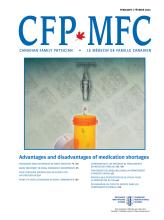Journal of the College of Family Physicians of Canada
Authors: Tracy Morton, Daniel J. Kim, Tracey Deleeuw, Jason Curran, Paul Olszynski and Virginia W. Robinson
Publication date: February 2024
The objective of this study was to determine the scale and scope of use of point-of-care ultrasound (POCUS) in rural British Columbia (BC). Respondents reported ease of access to local POCUS devices, with use highest in emergency departments (87.2%) followed by ambulatory care clinic (54.7%) and inpatient (50.3%) settings. From its origins in emergency medicine and surgical settings, point-of-care ultrasound (POCUS) use has rapidly spread to various specialties, including critical care, internal medicine, anesthesia, and family medicine. Point-of-care ultrasound is now widely available owing to technologic improvements, lower costs, and improved training pathways. For Canadian rural clinicians practising with limited access to diagnostic imaging services such as radiology ultrasound or computed tomography scanning, POCUS equips providers with a bedside tool that can answer diverse diagnostic questions, such as causes of shock, shortness of breath, or abdominal pain, among other clinical presentations. Furthermore, POCUS use improves procedural safety, especially with the use of real-time needle guidance.
Understanding POCUS use in rural British Columbia could better inform service planning and education needs, both provincially and nationally. Our objectives are to describe POCUS use among rural health care providers in British Columbia with a focus on its clinical use, provider attitudes, and barriers to its use.
